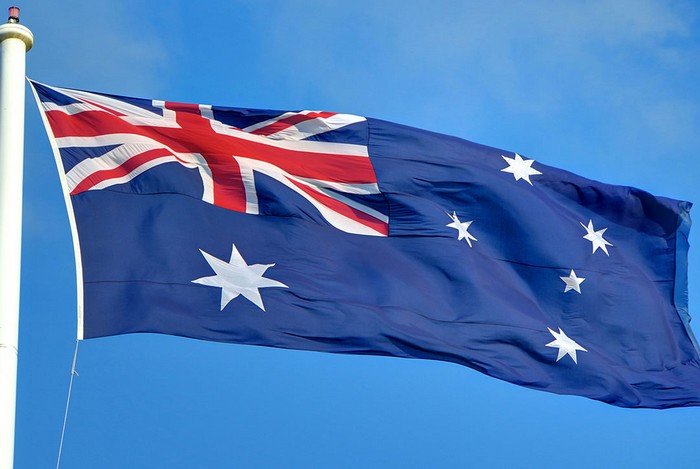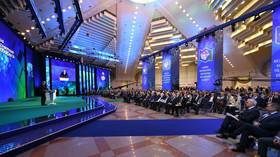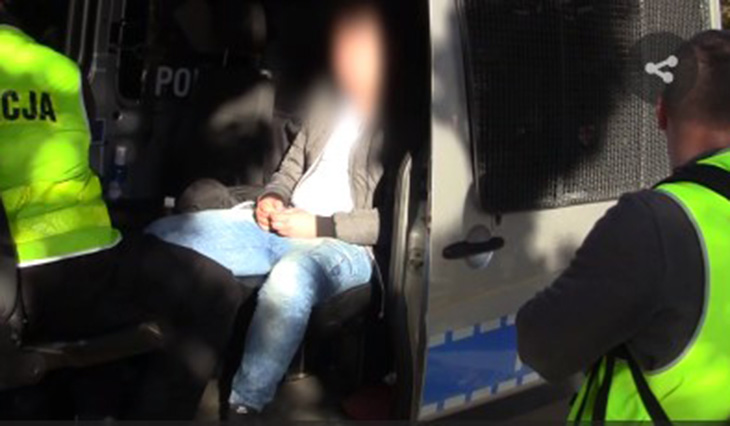
As of 2025, Qantas Airways (QF) continues to position itself as one of the leaders in the Asia-Pacific region with a robust and diverse fleet. Currently, the Australian flag carrier operates 125 mainline aircraft across short-haul, long-haul, and ultra-long-haul routes.
Qantas’s fleet includes a mix of Airbus and Boeing aircraft tailored to meet the diverse demands of domestic, regional, and international markets. However, this figure excludes aircraft operated by Qantas’ subsidiaries such as Jetstar, QantasLink, and Qantas Freight.
Moreover, with upcoming deliveries and a focus on sustainability, the airline is poised to maintain its strong market position.
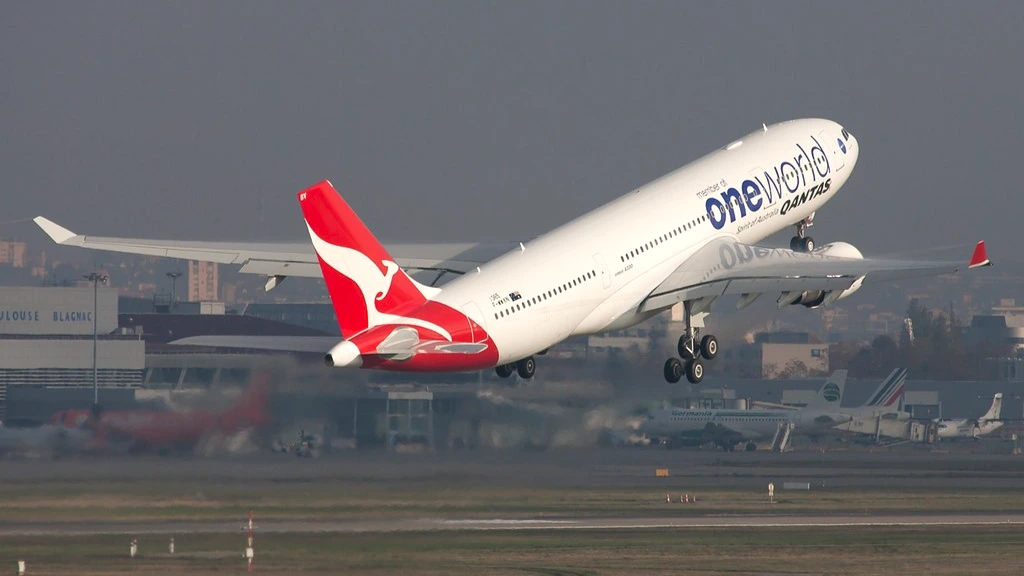 Photo: Clément Alloing
Photo: Clément AlloingQantas Airways Fleet
As of January 2025, Qantas operates a total of 125 mainline aircraft. Below is an overview of the aircraft types currently in service followed by those on order:
- Airbus A330-200
- Qantas currently operates eight Airbus A330-200 aircraft, primarily serving medium and long-haul routes such as Sydney to Los Angeles and Melbourne to Singapore.
- These aircraft are set to be replaced by newer models such as the Boeing 787 and Airbus A350 from 2027, as part of Qantas’ ongoing fleet modernization strategy.
- The A330-200 features a configuration of 27 business class seats, 224 economy seats, and a total of 251 seats.
- Additionally, Qantas plans to retrofit the cabin of its A330-200 fleet starting mid-2025 to enhance passenger experience.
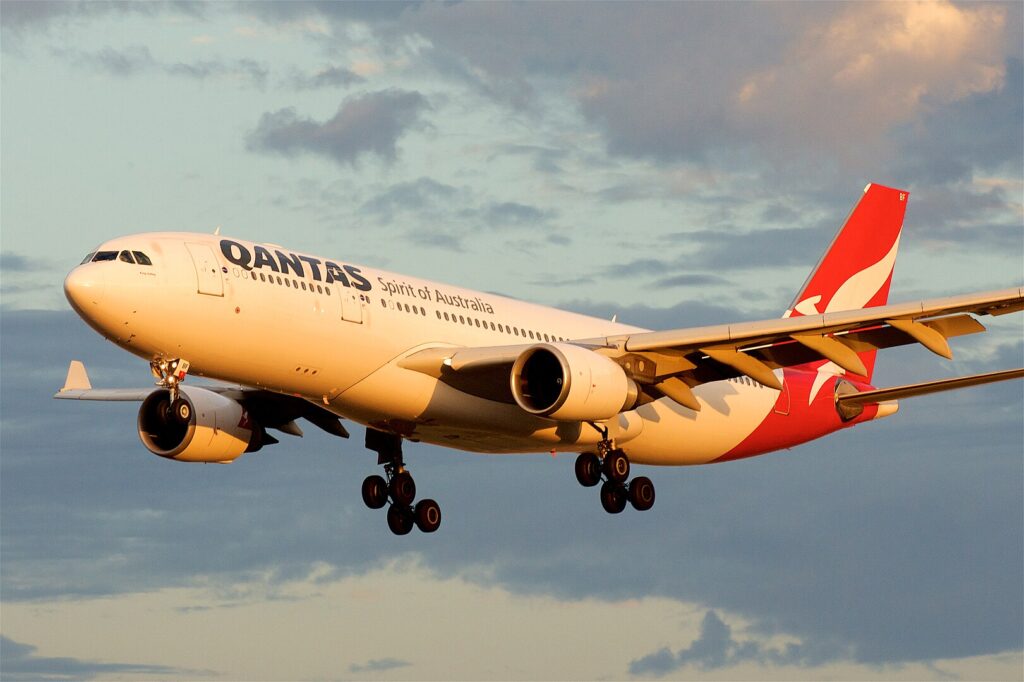 Photo: By BriYYZ from Toronto, Canada – Qantas Airbus A330-200 VH-EBF, CC BY-SA 2.0, https://commons.wikimedia.org/w/index.php?curid=68188847
Photo: By BriYYZ from Toronto, Canada – Qantas Airbus A330-200 VH-EBF, CC BY-SA 2.0, https://commons.wikimedia.org/w/index.php?curid=68188847- Airbus A330-300
- A total of 10 Airbus A330-300 aircraft are currently in service with Qantas, deployed mainly on medium and long-haul international routes.
- Like the A330-200, these aircraft will be phased out in favor of newer, more efficient aircraft starting in 2027.
- The A330-300 features a configuration of 28 business class seats, 269 economy seats, and a total of 297 seats.
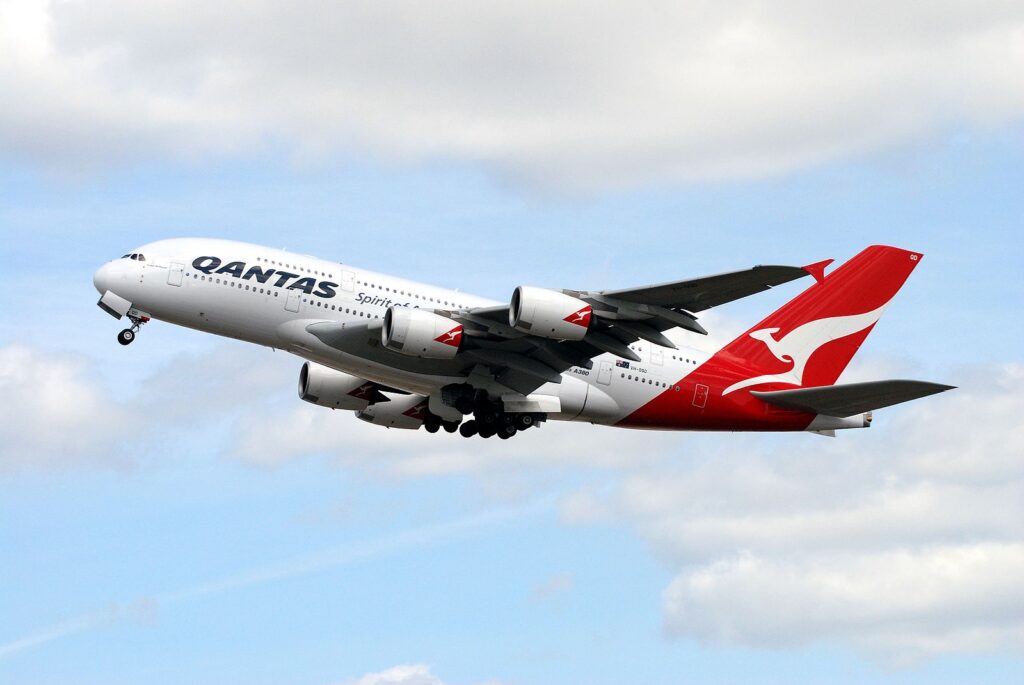 Photo by WikiCommons
Photo by WikiCommons- Airbus A380-800
- Qantas operates 10 Airbus A380-800 aircraft, which are used on high-demand international routes such as Sydney to Los Angeles and Sydney to London via Singapore.
- The superjumbos were recently reactivated, with the last of the A380 returning to service by early 2025.
- The Airbus A380-800s are equipped with 14 first-class seats, 70 business class seats, 60 premium economy seats, and 341 economy class seats, offering a total capacity of 485 seats.
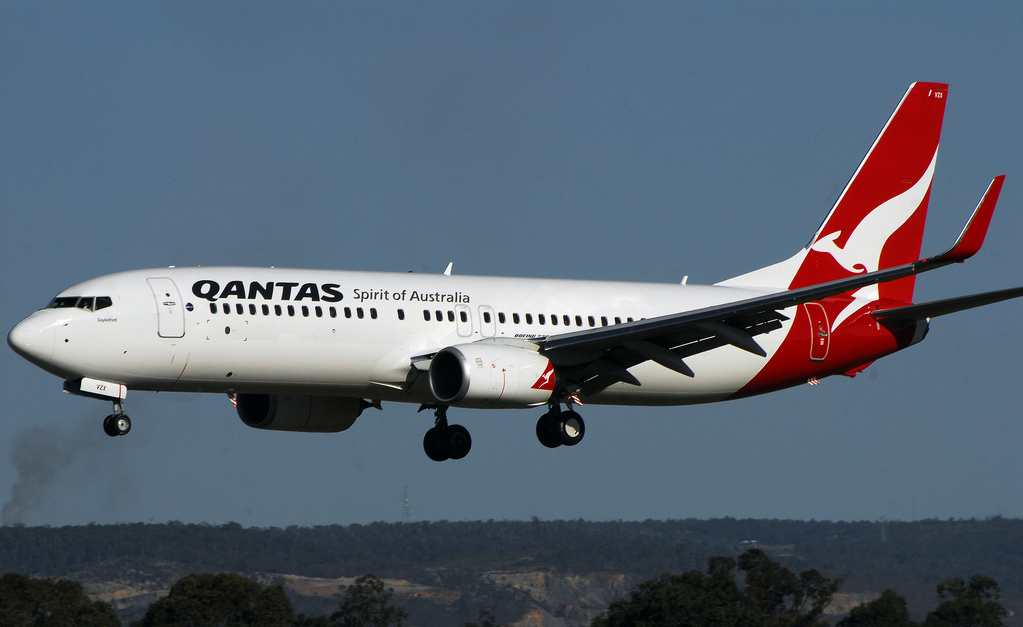 Photo: By Jordan Vuong from Perth, Australia – Qantas 737-800 short final, CC BY 2.0, https://commons.wikimedia.org/w/index.php?curid=24201981
Photo: By Jordan Vuong from Perth, Australia – Qantas 737-800 short final, CC BY 2.0, https://commons.wikimedia.org/w/index.php?curid=24201981- Boeing 737-800
- Qantas has a fleet of 75 Boeing 737-800 aircraft, which primarily operate on domestic and short-haul international routes.
- However, the Boeing 737s are set to be replaced by the Airbus A321XLR over the next few years.
- The Boeing 737-800 features 12 business class seats and 162 economy seats, with a total of 174 seats in its configuration.
- With the arrival of the A321XLR, Qantas will be able to offer more efficient and modern aircraft on domestic routes while expanding its capabilities for regional international flights.
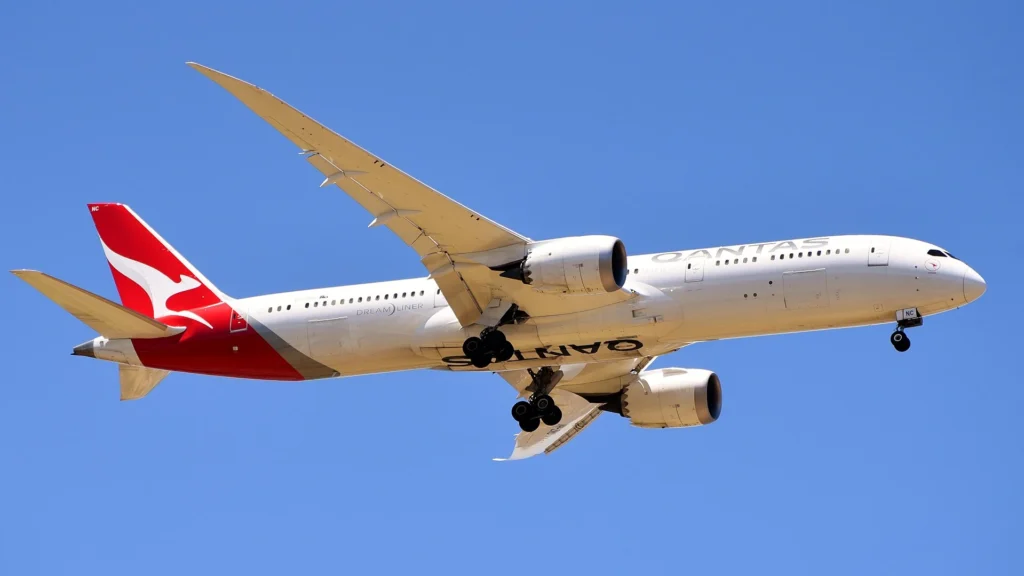 Photo: By Bahnfrend – Own work, CC BY-SA 4.0, https://commons.wikimedia.org/w/index.php?curid=86003593
Photo: By Bahnfrend – Own work, CC BY-SA 4.0, https://commons.wikimedia.org/w/index.php?curid=86003593- Boeing 787-9
- Qantas operates 14 Boeing 787-9 aircraft, with four additional units on order.
- These aircraft are deployed primarily on long-haul international routes, such as Sydney, Melbourne to Dallas, Perth to London, and Paris.
- The Boeing 787-9 features a seating configuration of 42 business class seats, 28 premium economy seats, and 166 economy seats.
- The additional four Boeing 787-9s are expected to be delivered in 2027. These aircraft will also be part of the replacement plan for the Airbus A330.
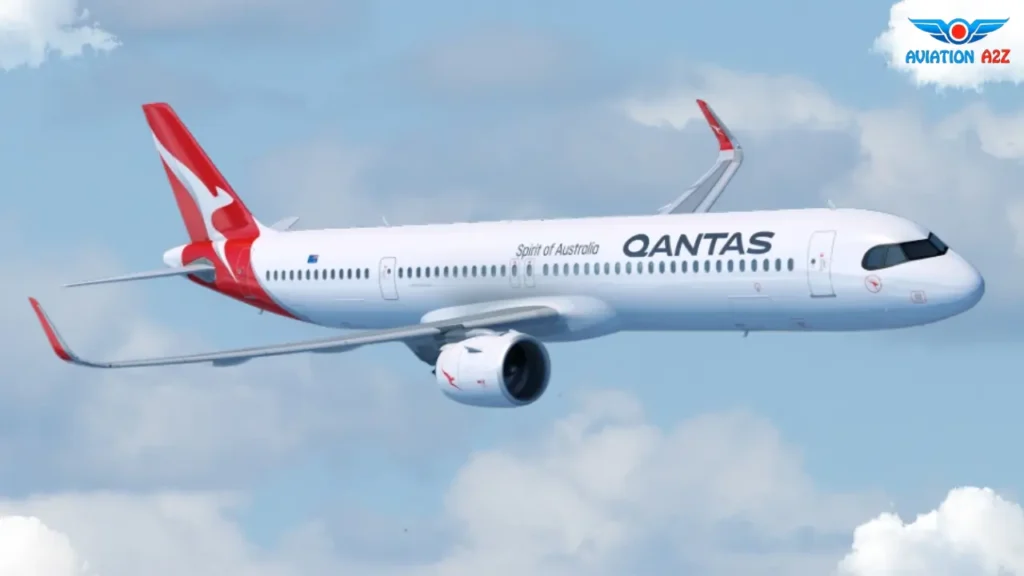 Photo: Qantas
Photo: QantasAircraft on Order
- Airbus A321XLR
- Qantas has 28 Airbus A321XLR aircraft on firm order, with the first deliveries expected in April 2025.
- The A321XLRs will replace the aging Boeing 737-800 fleet and will primarily serve domestic and regional routes.
- The A321XLR boasts an extended range of 8,700 kilometers, enabling Qantas to operate longer non-stop flights within Australia and to destinations in Southeast Asia and the Pacific.
- These aircraft will be configured with 197 seats, with 20 in business class and 177 in economy.
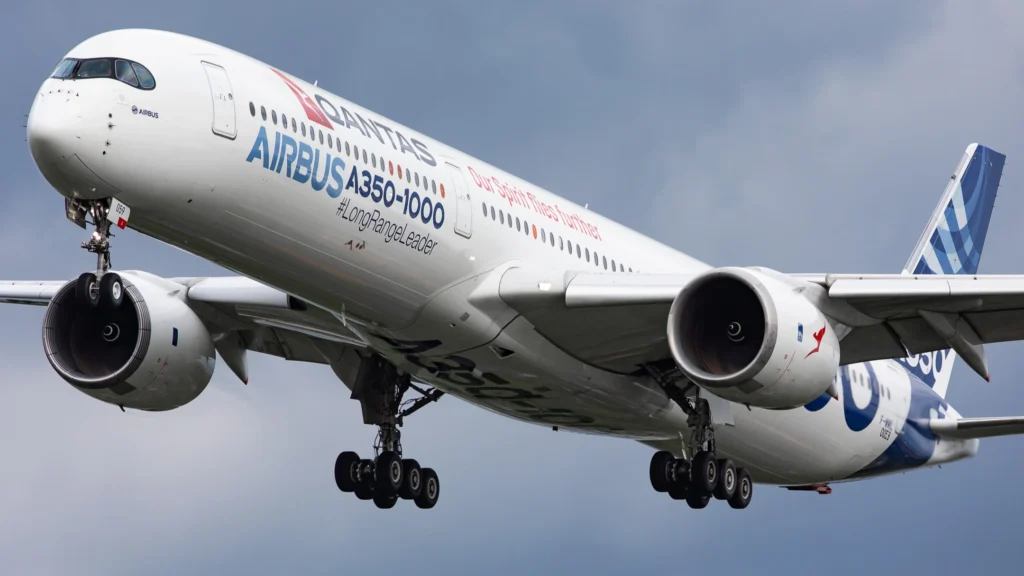 Photo: Clément Alloing
Photo: Clément Alloing- Airbus A350-1000
- Qantas has placed an order for 12 Airbus A350-1000 aircraft, which will be used primarily for ultra-long-haul routes, including those in the “Project Sunrise” flights.
- These aircraft are expected to enter service in 2026, and their primary role will be to operate direct non-stop flights between Sydney and New York, as well as between Sydney and London.
- The A350-1000s are being designed with a premium-heavy configuration, featuring six first-class seats, 52 business class seats, 40 premium economy seats, and 140 economy class seats, making it ideal for long-haul journeys.
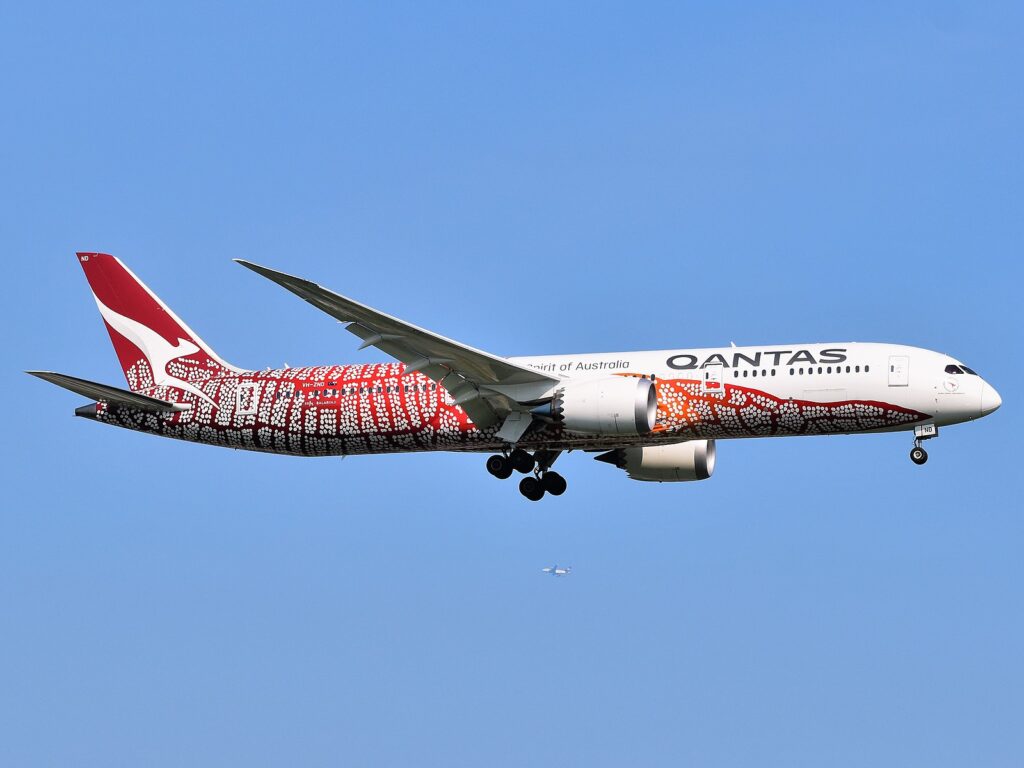 Photo by WikiCommons
Photo by WikiCommons- Boeing 787-10
- Qantas has placed an order for eight Boeing 787-10 aircraft, with deliveries beginning in 2027.
- These aircraft will replace older Airbus A330s and will be deployed on medium to long-haul international routes.
- The Boeing 787-10 will feature a similar seating arrangement to the Boeing 787-9, with a larger capacity that allows Qantas to accommodate more passengers on busy international routes.
Qantas is continually working to modernize its fleet, with plans to replace older aircraft and introduce new models like the Airbus A321XLR and Boeing 787-10 to improve efficiency, passenger comfort, and sustainability.
With a focus on both domestic and international growth, Qantas is investing in a fleet that will support its vision for the future of aviation.
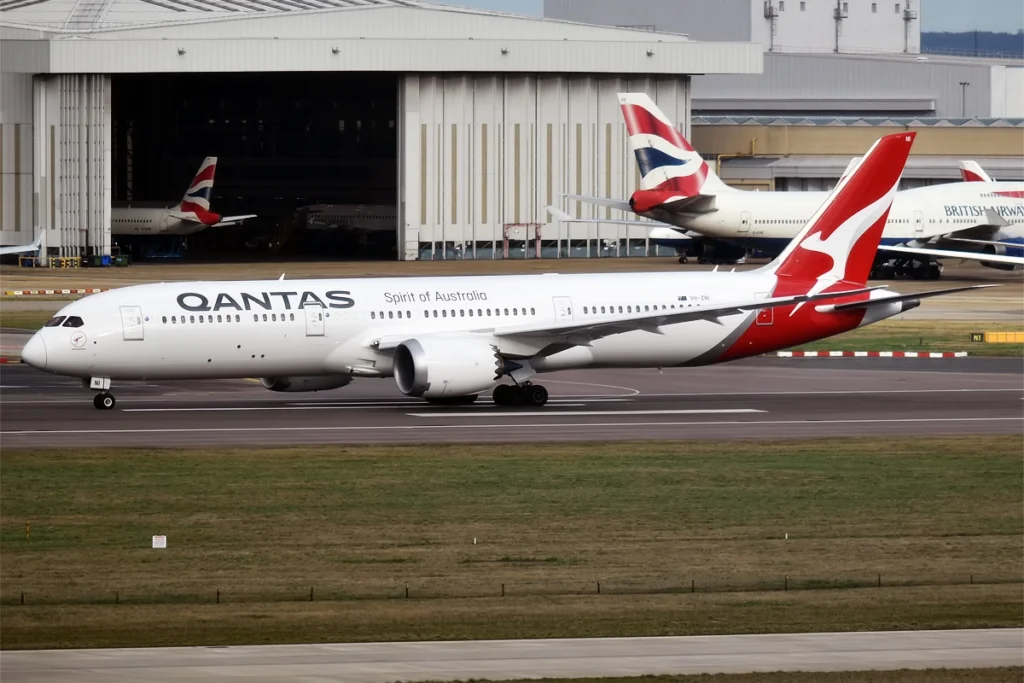 Photo: By Anna Zvereva from Tallinn, Estonia – Qantas, VH-ZNI, Boeing 787-9 Dreamliner, CC BY-SA 2.0, https://commons.wikimedia.org/w/index.php?curid=87549820
Photo: By Anna Zvereva from Tallinn, Estonia – Qantas, VH-ZNI, Boeing 787-9 Dreamliner, CC BY-SA 2.0, https://commons.wikimedia.org/w/index.php?curid=87549820Key Routes Updates
From February 2025, the Australian flag carrier will add approximately 220,000 seats to its international network over 12 months compared to its current schedule.
This expansion is driven by the launch of a new Brisbane – Palau route, the return of two Airbus A380s following maintenance and cabin modifications, and the arrival of more next-generation A220 aircraft for QantasLink.
Summary of Network Changes
United States
- Melbourne – Dallas: Flights increasing from three to four per week (from 6 February 2025).
- Sydney – New York (via Auckland): Flights reduced from six to five per week (from 6 February 2025).
- Brisbane – Los Angeles: The Boeing 787 Dreamliner returns to the route, more than doubling premium seat capacity and offering Premium Economy seats. Daily flights to be operated by a mix of A330 and 787 aircraft (from 11 August 2025).
- Sydney – Dallas: The A380 returns to this route for the first time since the pandemic. Daily flights to be operated by a mix of A380 and 787 aircraft (from 11 August 2025).
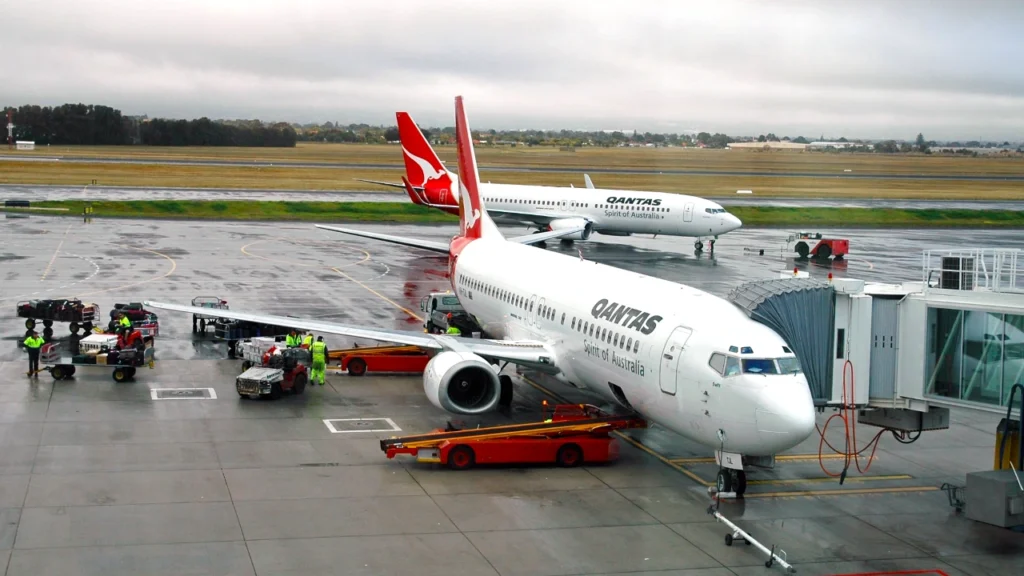 Photo: James St. John | Flickr
Photo: James St. John | FlickrAsia
- Sydney – Seoul: Qantas to cease flights, while Jetstar increases services from four weekly flights to daily (from 14 June 2025), resulting in a 4% increase in seats.
- Darwin – Singapore: Launching with new QantasLink A220 aircraft instead of the previously planned E190, offering 50 additional seats per week. Operates five times per week (from 30 March 2025).
Tasman and the Pacific
- Brisbane – Auckland: The 787 will operate on this route for the first time, alongside 737 and A330 aircraft, increasing premium seat capacity by 40% annually (from 11 August 2025).
- Brisbane – Noumea: Flights resumed recently after a temporary suspension in April, increasing from one to up to two per week, with the Embraer E190 operating the route for the first time.
- Brisbane – Palau: Weekly flights are being operated by Qantas’ B737 aircraft.
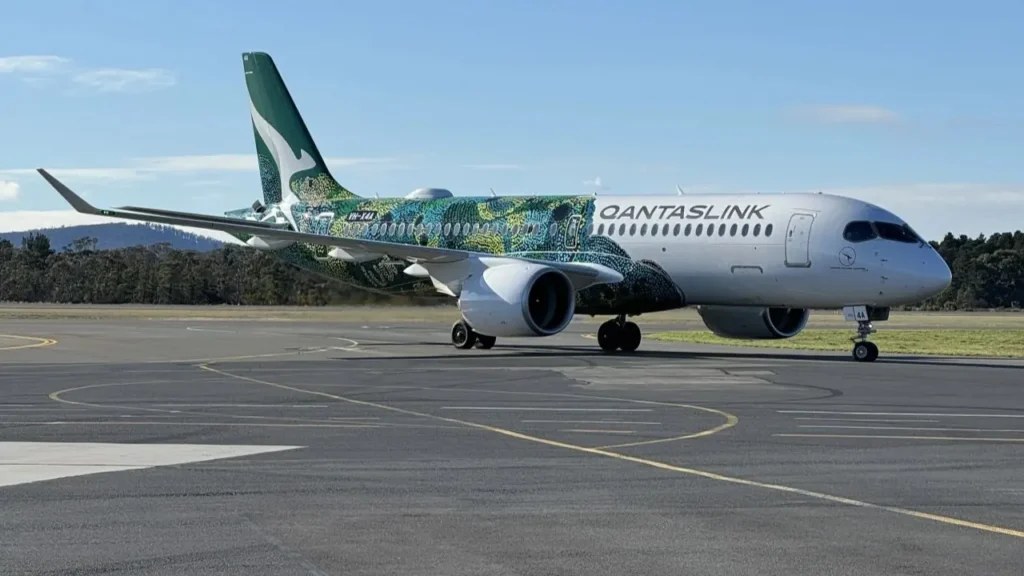 Photo: Sarah Parkes
Photo: Sarah ParkesConclusion: Sustainability and Fleet Modernization
Qantas is committed to reducing its environmental impact through fleet modernization. The newer aircraft, including the Airbus A350-1000, A321XLR, and Boeing 787-9/10, are designed to improve fuel efficiency and reduce emissions. This aligns with its broader goal of achieving net-zero carbon emissions by 2050.
With a strategic mix of aircraft, Qantas is well-positioned for continued success in 2025 and beyond. Its investment in next-generation aircraft combined with route expansions, highlights the airline’s forward-thinking approach.
As Qantas enhances connectivity across Australia and internationally, passengers can look forward to an improved travel experience supported by modern, fuel-efficient aircraft.
Stay tuned with us. Further, follow us on social media for the latest updates.
Join us on Telegram Group for the Latest Aviation Updates. Subsequently, follow us on Google News.
British Airways Fleet in 2025: Modernization and Sustainability
Sources: Qantas, Wikipedia, FlightRadar24
The post Qantas Airways Fleet in 2025 appeared first on Aviation A2Z.



